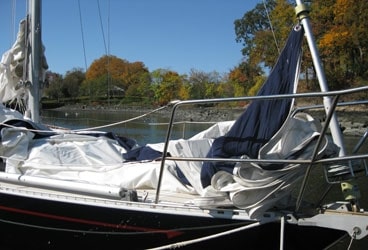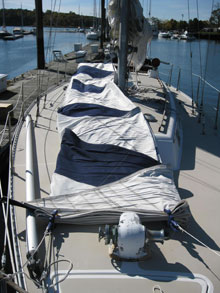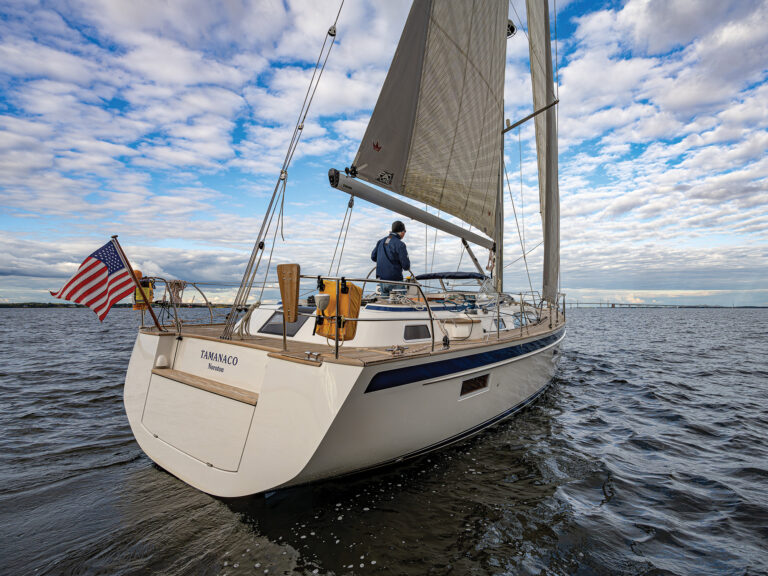
flaking 368
I sail my Cal 39 Mark III, Elusive, by myself, and I find that flaking the roller-furling jib is a problem. When I had hanked-on sails, I could flake the sail on deck by myself, and the flaked sail would easily fit into its bag. It was simple: I’d leave the sail hanked on to the forestay, allow the hanks to produce the flakes at the luff, then pull these natural flakes out to the leech. Then all I had to do was detach the hanks and fold the sail from the clew to the luff.
Now that I have a roller-furling jib, I obviously don’t have to flake the sail as much, but when I do-to change headsails or at the end of the season-it comes down in a pile on deck. When I’ve tried to flake it, no hanks exist to hold the sail and create the folds at the luff. I’d be lucky if I could get the sail small enough to fit into a bag. I needed a way to get a reasonably neat flake while I was alone on deck. The following method allows me to do just that to my 625-square-foot roller-furling genoa.

Wayne Gillikin| |****|
Irwin Quick-Grip hand clamps (www.irwin.com), or a similar spring-loaded clamp, with lines tied to the handles, provide the extra set of hands that I need. I first work from the tack to the head along the luff to establish the initial flake; I put a foot on the folds to keep them organized as I go. Once I’ve made all the initial flakes at the luff, I attach the clamps to each corner near the folds. Each pass of luff tape lays on the preceding to produce a nice stack, and I make sure that the clamp’s bite is beyond the luff tape to ensure that none of the sail pulls out.
I tie the lines from each clamp to the aft end of the bow pulpit to hold the sail in place. Then I can work from the luff and carefully position each flake, starting at the bottom and working toward the top. I work my way aft along the sail to extend the flakes all the way along. Getting the flakes to lay flat and flow properly from the luff to the clew is the part of the process that simply can’t be accomplished singlehandedly with roller furling sails on deck unless you have secure clamps holding the luff.
The final step is to fold the sail so it fits into its designated sail bag. My personal preference is to start folding from just aft of the luff, laying each successive fold on top of the last. That way, the next time I take the sail out of its bag on deck, the sail is properly oriented, with the head and clew on top ready for the halyard and sheets to be attached.
Wayne Gillikin lives in Wayne, New Jersey, and singlehands Elusive, his Cal 39 Mark III, on Long Island Sound.








